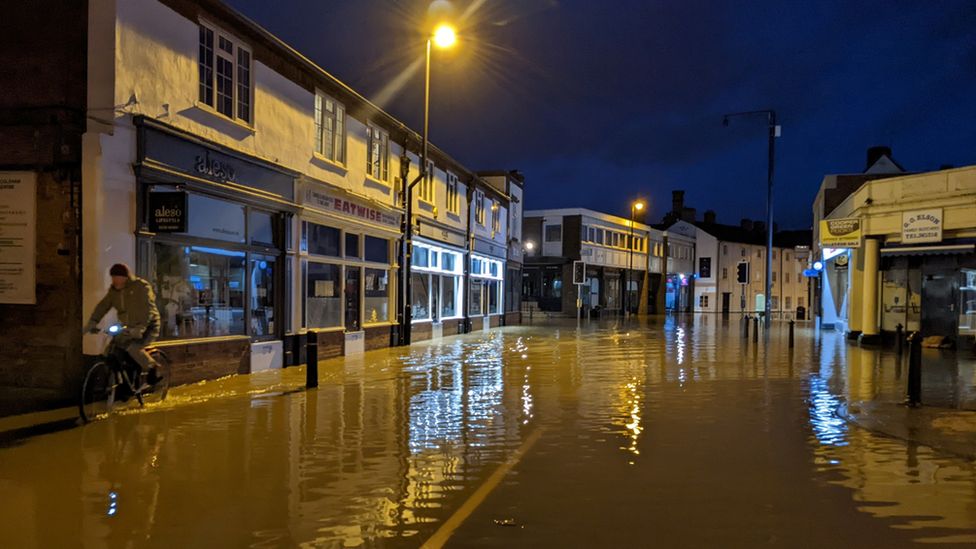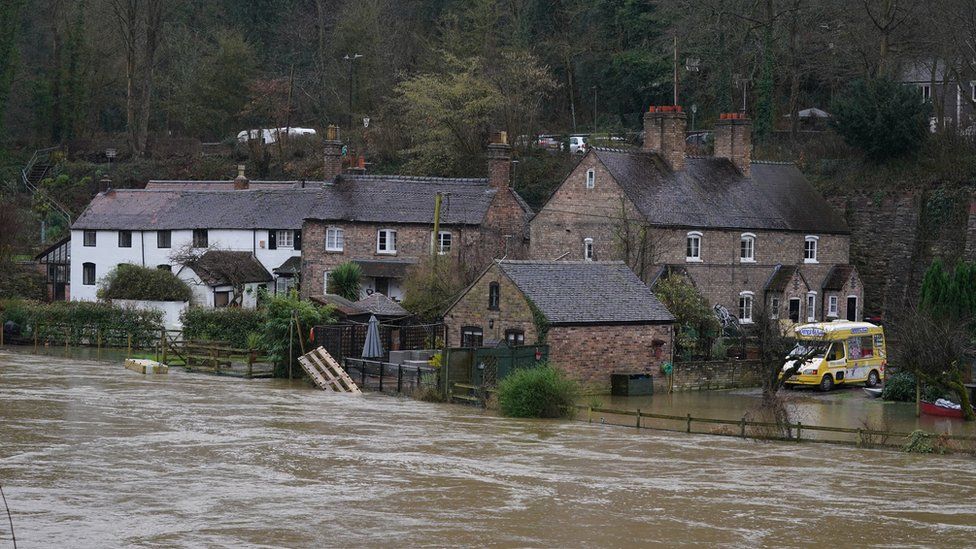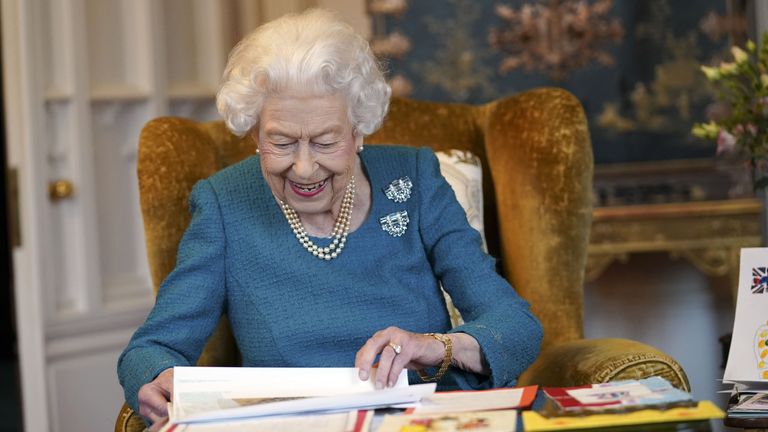This video can not be played
To play this video you need to enable JavaScript in your browser.
Communities along the River Severn have been urged to remain wary as water levels begin to subside in some areas.
A danger to life warning remains in Bewdley, Worcestershire, but the one issued for Ironbridge in Shropshire was lifted on Wednesday evening.
The Severn peaked in Worcester earlier but flooding is "increasingly drawn out", the Environment Agency said.
The situation could "get worse before it gets better", Worcestershire County Council warned.
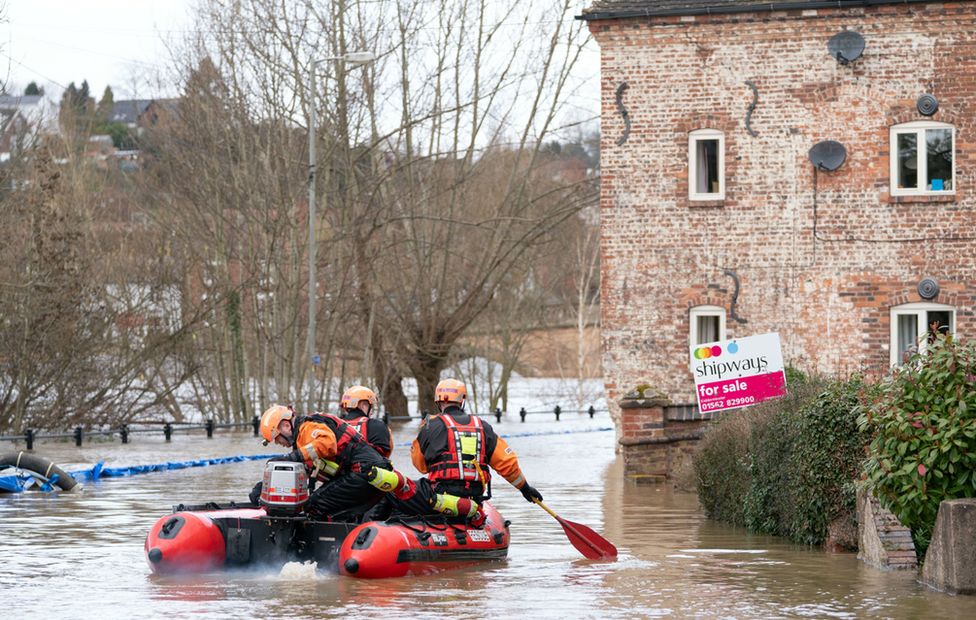
The peak reached Worcester at around 17:00 GMT but while the situation was "gradually improving", water levels would remain high for a number of days, Ian Jones from the Environment Agency tweeted.
In Bewdley, the Severn overtopped defences at Beales Corner following heavy rain on Tuesday afternoon.
Dan Bond, from the Environment Agency, said: "We are still facing a significant flooding risk, and we are urging people to remain vigilant and take extreme care.
"Last weekend's heavy rainfall on already wet areas continues to cause river flooding along the River Severn and is likely to continue over the next few days."
His colleague Nick Green said the recent events had been "incredibly frightening" for people in Bewdley, where search and rescue crews have been checking properties after dozens were evacuated.

Some residents have criticised the government's response, including Maxine Preece who said it was "very disappointing" that she did not see any rescue workers near her home in Bewdley.
"I think they have just decided we were going to flood, it feels that way, and just told us to prepare ourselves and left," she added.
The temporary barriers at Beales Corner in the town were also breached in 2021 and while the Environment Agency intends to submit a planning proposal for permanent defences later this year, they are unlikely to be in use until at least 2024.

In Shrewsbury, where large parts of the town were underwater, residents have also expressed disdain.
Paul Fairhurst and Sarah Jackaman have been flooded about 15 times but said the past three years had been the worst.
"This is the third year we've seen these unprecedented levels of water," Ms Jackaman said.
"We were promised millions of pounds for this region and the Severn catchment to come up with solutions for flooding and we've yet to see any of the benefits."
This video can not be played
To play this video you need to enable JavaScript in your browser.
Responding to the criticism, the Environment Agency said: "We prioritise our resources, and will assist householders if we have the resources to do so once public-maintained assets are operational.
"Where defences are outflanked we undertake pumping were possible and safe, as well as usual providing warning, informing and - in cases such as Bewdley - supporting other responders in evacuation."
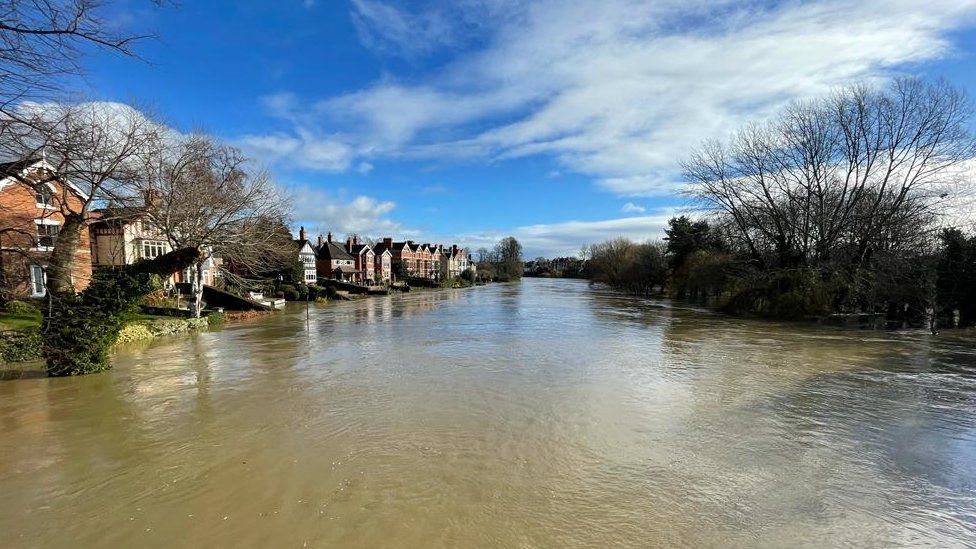
Data from Environment Agency monitoring stations near the Worcestershire town suggest river levels exceeded the normal range at about 13:30 GMT on Saturday.
Officials say levels are forecast to remain high for a long period due to further rainfall this week, though current estimates suggest they will not reach the historic high of about 5.5m.
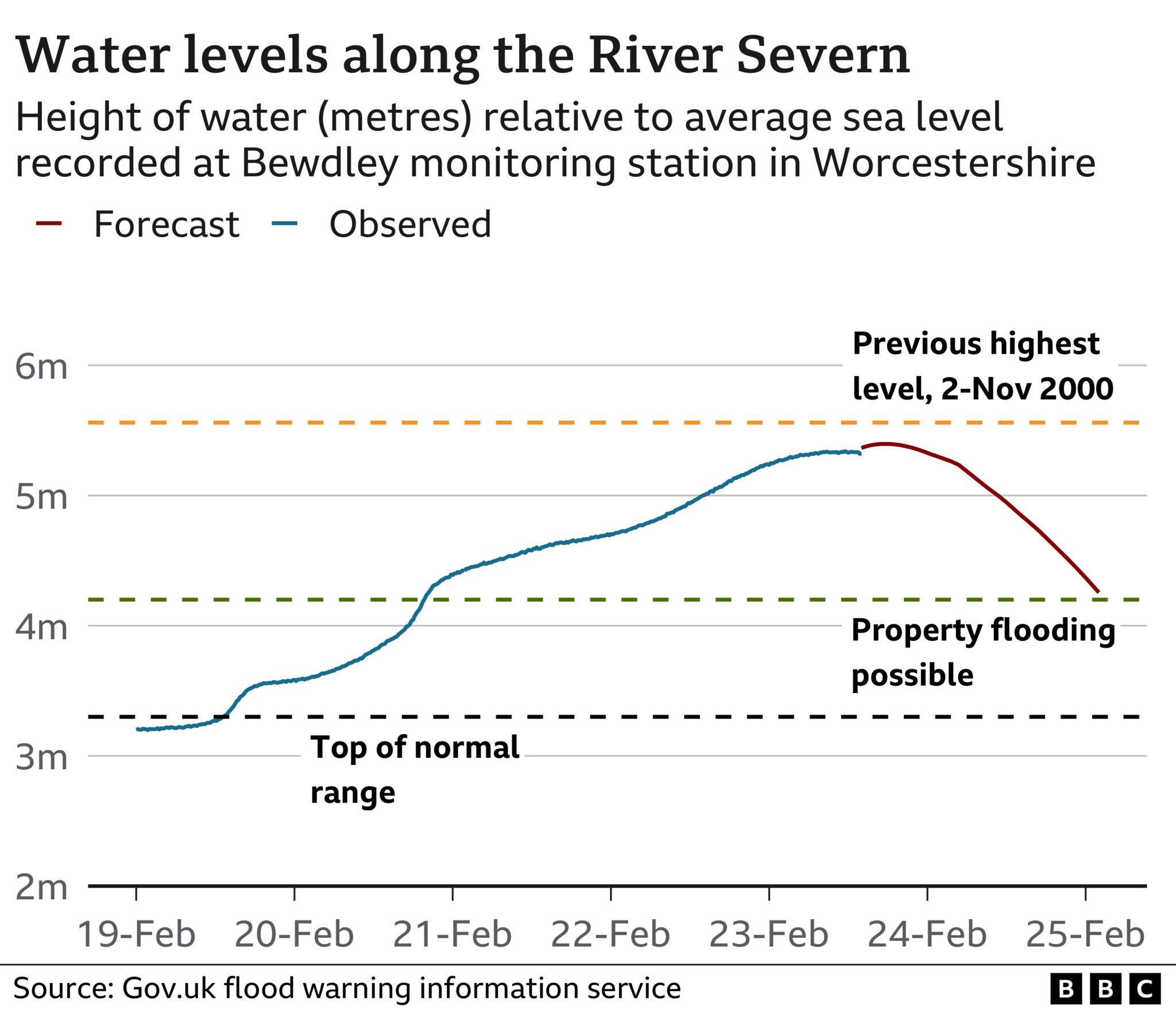
Several properties in Worcester have flooded, particularly in the Diglis area.
Sam McCarthy from Worcester Business Improvement District said flood warnings had impacted footfall in the city.
"Businesses have been through a really difficult period over the last 18 months, so this is something they really could do without at this point in time," she said.
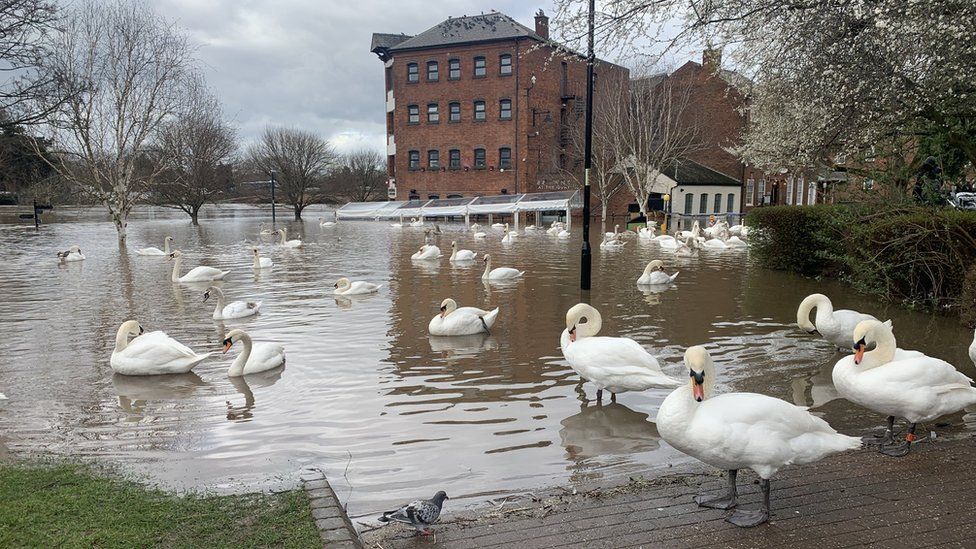


In Ironbridge, water levels were still high against barriers so the Wharfage remained closed to vehicles and pedestrians, Telford & Wrekin Council said.
Levels peaked in the early hours of Wednesday morning at 21.65ft (6.6m), but were "now slowly retreating", it said.
The Ironbridge Gorge Museum Trust said the Museum of The Gorge and Coalport China Museum were both flooded.
As a result of the flooding in Ironbridge, it had also had to close the Tollhouse and the Jackfield Tile Museum.

Karen Davies, from the trust, said: "We have just redecorated Coalport after the floods of 2020, we were just starting renovation work, significant renovation work, on the Museum of the Gorge, and it will take team spirit to get in there and get the museums open."
The river has also burst its banks at Bridgnorth, where a flood reception centre was opened to help those affected.
Levels peaked in the town at about 06:00 GMT when the water reached heights of 5.12m.
This video can not be played
To play this video you need to enable JavaScript in your browser.
Villagers in Melverley near the Welsh border had been out in a boat collecting "vital medication for neighbours and feed for animals", Shropshire Council said.
It said residents told them that it was "the worst flooding for at least 20 years".
Mr Green said although some areas had peaked, river levels would not retreat for some time.
"Any rain that now falls on the Welsh mountains, because the ground's so soggy, will not be soaked up," he said.
"So it just goes straight into the river system and then it has to work its way down through Shropshire, Worcestershire, Gloucestershire and out into the sea."
The River Wye has peaked in Herefordshire and flood water has been slowly falling.

Follow BBC West Midlands on Facebook, Twitter and Instagram. Send your story ideas to: newsonline.westmidlands@bbc.co.uk
- 18 hours ago

- 16 hours ago
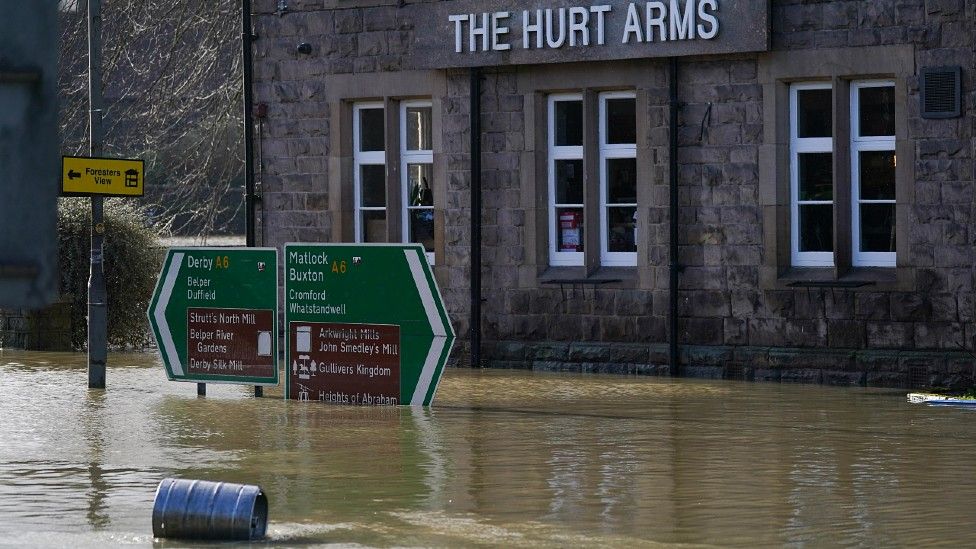
Around the BBC
Related Internet Links
https://news.google.com/__i/rss/rd/articles/CBMiP2h0dHBzOi8vd3d3LmJiYy5jb20vbmV3cy91ay1lbmdsYW5kLWhlcmVmb3JkLXdvcmNlc3Rlci02MDQ5MDA4MdIBQ2h0dHBzOi8vd3d3LmJiYy5jb20vbmV3cy91ay1lbmdsYW5kLWhlcmVmb3JkLXdvcmNlc3Rlci02MDQ5MDA4MS5hbXA?oc=5
2022-02-23 21:21:55Z
1286850233

